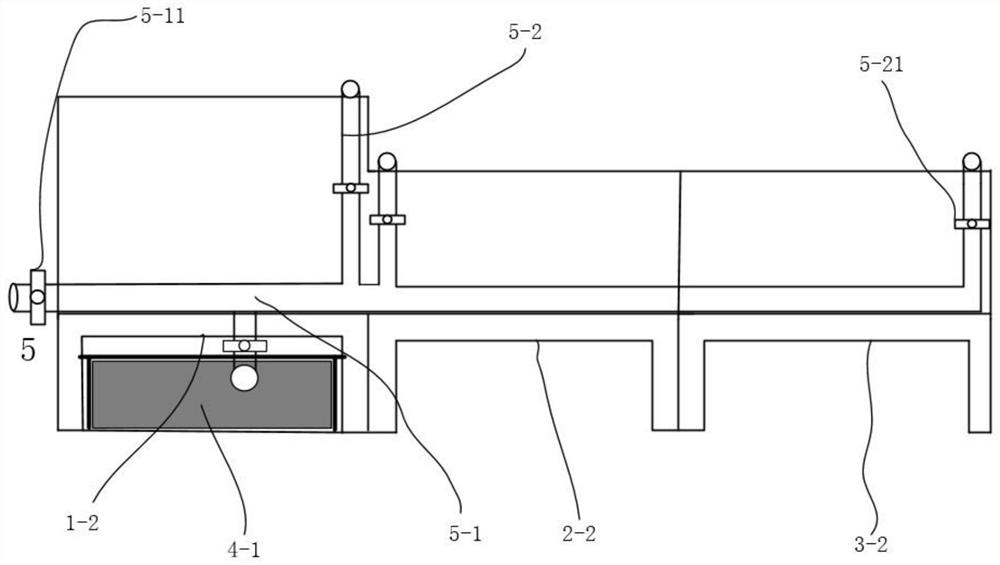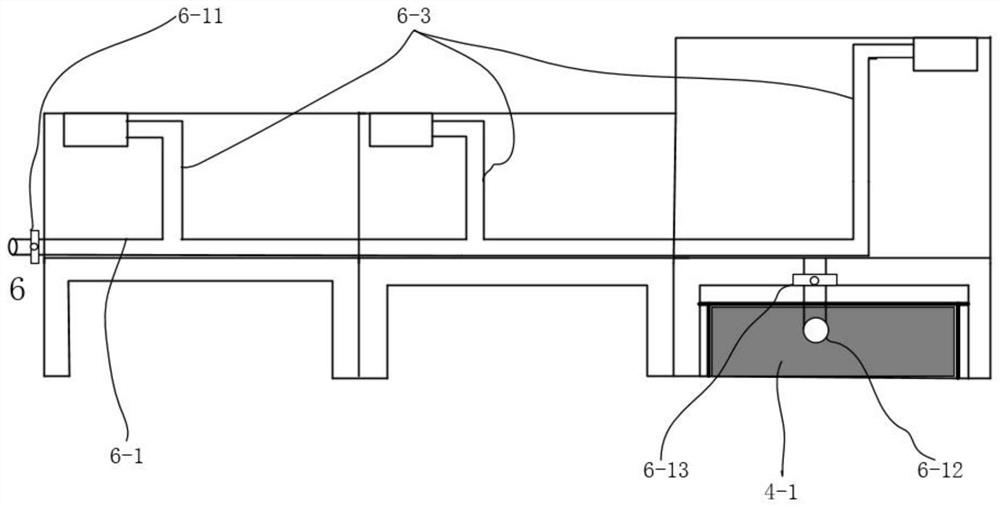Young freshwater mussel fry removing and fry precise breeding device and manufacturing method
A cultivation device and seedling technology, which is applied in the field of mussel juvenile clam seedling removal and seedling precision cultivation device, can solve the problems of poor synchronization, low density, long breeding time, etc., and achieve the effect of reducing friction or collision injury infection
- Summary
- Abstract
- Description
- Claims
- Application Information
AI Technical Summary
Problems solved by technology
Method used
Image
Examples
Embodiment 1
[0048] Embodiment 1 A device for removing seedlings and seedlings of river mussels and juveniles: it includes a temporary culture system for host fish 1, a system for removing and collecting juveniles 2, a system for precise seed cultivation 3, a temperature control system 4, and a water inlet System 5 and water outlet system 6;
[0049] The temporary breeding system 1 of the host fish comprises the temporary cultivation box body 1-1 of the host fish, the casing support frame 1-2 of the temporary breeding box body of the host fish and the temporary breeding isolation net 1-3 of the host fish. There is a host fish temporary breeding isolation net 1-3, and a host fish temporary breeding box box support frame 1-2 is arranged below the host fish temporary breeding box body 1-1;
[0050] The juvenile clam removal and collection system 2 includes a juvenile clam removal and collection box 2-1, a box support frame 2-2, a juvenile clam removal and collection box isolation net 2-3, a j...
Embodiment 2
[0077] Embodiment 2: in conjunction with embodiment 1 and accompanying drawing: a kind of making method of clam juvenile clam seedling removal, seedling fine cultivation device: specifically comprise the following steps:
[0078] 1) The production of the cabinet: use 2 pieces of 200-220cm×50-60cm, 2 pieces of 120-130cm×50-60cm, and 1 piece of 200-220cm×120-130cm with a thickness of 0.8-1.2cm. Use polyethylene glue as an adhesive to make a host fish holding box of 200-220cm×120-130cm×50-60cm; use 4 pieces of 200-220cm×30-40cm, 3 pieces of 120-130cm×30-40cm, Two pieces of 200-220cm×120-130cm polyethylene boards with a thickness of 0.8-1.2cm are made into 200-220cm×120-130cm×30-40cm juvenile mussel seedling removal and collection boxes and seedling precision cultivation boxes, of which The host fish holding box, juvenile mussel seedling removal and collection box share a side plate of 200-220cm×50-60cm, and this side plate is opened with a fish release port;
[0079] 2), the mak...
PUM
 Login to View More
Login to View More Abstract
Description
Claims
Application Information
 Login to View More
Login to View More - R&D Engineer
- R&D Manager
- IP Professional
- Industry Leading Data Capabilities
- Powerful AI technology
- Patent DNA Extraction
Browse by: Latest US Patents, China's latest patents, Technical Efficacy Thesaurus, Application Domain, Technology Topic, Popular Technical Reports.
© 2024 PatSnap. All rights reserved.Legal|Privacy policy|Modern Slavery Act Transparency Statement|Sitemap|About US| Contact US: help@patsnap.com










